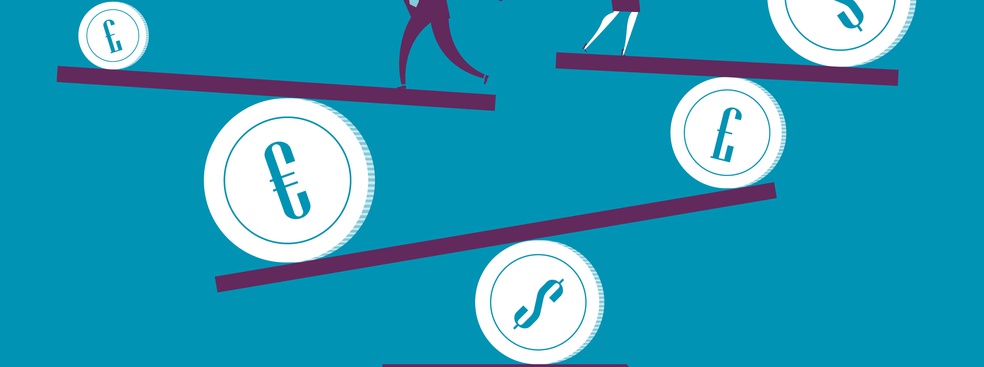Although excessive risk-taking is widely blamed for the financial meltdown that unhinged the global economy in 2008, a fairly substantial research gap still exists when we look to explain what exactly changed in the years leading up to the crisis.
To this very day, one important and overlooked factor is the peculiar legal structure that shields corporations from negative consequences of their actions, thus encouraging excessive risk-taking:
Limited liability legally stipulates that investors are only liable for the fixed amount they invested. If a company fails or if an organization is sued, the plaintiffs are suing the company, and not its owners or investors who are not personally liable, even if the associated costs far exceed the market value of the corporation. This shielded BP shareholders, for example, from the costs associated with the Deepwater Horizon explosion and oil spill in 2010, and the costs of the clean-up had ultimately to be absorbed by American taxpayers.
Limited liability, as an important element of contemporary corporate legal structure, is highly conducive to moral hazard type behaviours. Moral hazard is a notion initially derived from the insurance industry – where, as individuals know that the costs associated with certain behaviours are covered through insurance schemes, they are likely as a consequence to take more risks. This type of interplay between “insurance” like systems and high risk taking has also been characteristic of the banking sector through the mechanism of the “lender of last resort” – where essentially the state has come to “insure” banks against any loss they might incur through risky behavior. Arguably, limited liability further inscribes moral hazard logics at the heart of contemporary corporations and of contemporary capitalism. The combination of limited liability, lender of last resort and “too big to fail” made this especially true in the financial sector where the 2008 crisis provoked bailouts in even the most economically conservative societies. Here again, the taxpayer picked up the tab.
Today, limited liability has inscribed moral hazard at the heart of the contemporary corporate system – and this has turned instability into a defining characteristic of modern capitalism. Has this, however, always been the case?
Risky behavior: a historical perspective
“It seems almost unfathomable today that an investor should be held accountable for an accident or a business failure above and beyond the value of the stocks that he or she holds,” explains Marie-Laure Djelic, Professor of Management and co-author of the paper ‘Limited liability and its moral hazard implications: the systemic inscription of instability in contemporary capitalism.’ “However, what’s surprising is that the opposite was true well into the nineteenth century, as capitalism took its modern shape.”
In other words, most businesses were traditionally associated with unlimited liability: if you invested in a business and something went wrong, not only would you be liable up to the amount that you put into the business, that failure could also dig into your personal wealth if it did damage beyond the value of the business. In parallel, moral hazard – the tendency to take risks because the consequences of failure will be covered – was traditionally seen as morally reprehensible.
“It’s clear that over time, these two concepts have followed parallel but unconnected paths: they’ve evolved, and progressively been diffused and institutionalized. However, a real link between the two has never been firmly established,” she continues. “Since my own research focuses primarily on the historical trajectory of limited liability, the search for this link brought me to work with PhD Student Joel Bothello who had begun his doctoral research on the evolution of moral hazard. By working together – using a methodology inspired by Michel Foucault - we were able to realize a parallel genealogy of the two concepts but also to connect both paths together.”
Limited liability: a structural basis for moral hazard
“The 2008 financial crisis has already been linked by multiple researchers to the diffusion of moral hazard and its separation from the notion of morality,” explains Joel Bothello. “What we wanted to find out was: is moral hazard part of human nature or is there something about the system in which we live that encourages more and more of this type of behavior?”
By tracing the genealogy of both moral hazard and limited liability, Djelic and Bothelllo argue that limited liability is in fact a powerful and consequential element of contemporary corporate legal structure through which, essentially, moral hazard has become inscribed at the heart of the system.
In other words, while the two concepts evolved in disconnect, in reality they have been completely connected since the end of the nineteenth century, and today one (limited liability) explains the other (moral hazard). This double layer of moral hazard/limited liability – both at the firm and societal level – has become a systemic feature of contemporary capitalism and expedited the financialization of the economy.
“In the case of the latest financial crisis, the affinity between moral hazard and limited liability is particularly visible,” adds Professor Djelic. “While banks historically granted mortgages with the intent of holding them to maturity, once these mortgages became securitized, the short-term return from the sale of the loan became their primary concern. In a sense, you could say that banks became risk lovers. This kind of short-termism would not have been possible without limited liability.”
Policy changes that could effectively discourage excessive risk taking
In conclusion, this research argues that the structural link between limited liability and moral hazard is an important explanatory factor of the systemic instability of contemporary capitalism and, as a consequence, of a pattern of recurrent crises that are regularly disrupting our economies and societies. As such, it argues that this instability cannot be solved simply by punishing the wrong doers or by improving the quality of governance mechanisms.
In other words, risky behavior will be discouraged only if you change the level of responsibility related to share ownership.
“Of course, we’re not advocating a return to unlimited liability, which just wouldn’t work in today’s economy. However, policy could call for extended liability – where the ultimate financial responsibility would be the initial investment multiplied by a certain factor. The multiplier effect would depend on the critical nature of the industry for the economic stability of a nation or a region and would reflect societal and political preferences. In that context, investors would be more likely to think twice about engaging themselves in risky and dangerous business. And the systemic instability of contemporary capitalism would be mitigated in part.”
Encouragingly, the idea is starting to gain traction among researchers and policy makers. It will be interesting to see whether these types of concrete policy changes come to be implemented in the coming years.
Further Reading:
"Limited Liability and Moral Hazard Implications: An Alternative Reading of the Financial Crisis"









